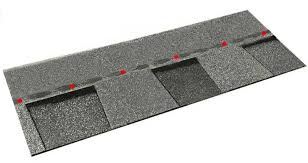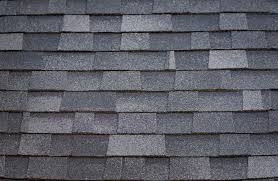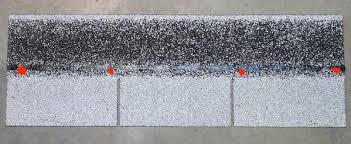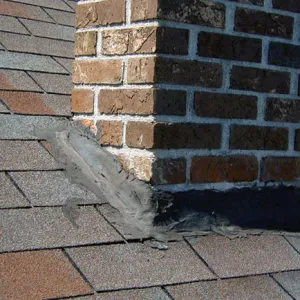5 Key Indicators That It's Time to Replace Your Roof
- Wealth Construction

- May 24
- 4 min read
Updated: May 26
As a homeowner, maintaining your house is crucial, and the roof plays a vital role in protecting your home and family from the elements. Over time, roofs can deteriorate and fail. Knowing when to replace your roof can save you from costly repairs. Let’s look at five clear signs that it may be time for a new roof.
1. Leakage or Discoloration on Ceilings
Water stains on ceilings or walls are often signs of leaks. Persistent leaks can signal serious issues with the roof’s structure.
Ignoring leaks can result in water damage, mold growth, and expensive repairs. For example, failing to fix a small leak can lead to mold, which affects 1 in 5 homes in the U.S. If your roof continues to leak, consult a roofing professional to determine if a replacement is necessary.


Being proactive about leaks can save you from significant repair costs later.
2. Visible Signs of Wear and Tear: Loose/Peeling Shingles
Roofs face harsh weather conditions every day, including intense sun, heavy rain, and snow. Check for warped, cracked, or curling shingles, which indicate wear.
For instance, if you see shingles that are missing granules or are starting to buckle, these are strong indicators that your roof needs attention. A study from the National Roofing Contractors Association suggests that even minor repairs can escalate to larger issues if not addressed. Regular inspections, especially after severe storms, can help spot signs of damage early.
Deteriated, Rotted and Peeling shingles.
Over time shingles may sag due to improper nailing or just a bad storm. And shingles that have made it to the end of their life cycle deteriorate and peel up at the bottom edge. Illustrated in the the pictures below.
Improperly nailed shingles.
3. Age of the Roof and 3 Tab Shingles
How old is your roof? Most asphalt shingle roofs last between 15 to 30 years.
The age of your roof is one of most important factors that your home insurance holder will gauge when trying to have your insurance company pay for the replacement of your roof. In some cases, a 15-year-old roof might still appear functional but can lose its ability to protect against leaks.
Knowing your roof’s age helps you plan for replacement before problems worsen.
Lastly, there are two types of asphalt shingles; architectural & 3-tab shingles. Architectural also called Laminated shingles have virtually stopped the purchase of 3 tab shingles. Although 3-tab shingles can still be bought at big box stores, no roofer would recommend replacing a whole roof with them. The only time 3-tabs are typically used are for repairs. The reason why that is, is because Architectural shingles are like a upgraded 2.0 version of their predecessor; the 3-tab. Architectural's are thicker, multi-layered, more resistant to wind, rain, and hail. As well as offering more warranties. And with the rise in popularity of them the price of one bundle has come down, closer to the price of one bundle of 3-tab shingles.
So if your entire roof's shingles are still comprised of 3-tab shingles, that would be another great reason to call for a roof inspection and starting proactively planning on getting it replaced.
Architectural (Laminated) Shingles - (25-30) Year Lifespan.
3 Tab Shingles - (15-20) Year Lifespan.
4. Three or More Layers of Shingles
It's common knowledge in the construction industry that it's not best practice to install shingles on top of shingles, but one layer on top of another is feasible. But issues may arise when there are 3 layers of shingles or more. Issues with leaks or the sheer load being beared by the roof's decking/framing, may not be able to withstand the weight of 3 layers as well. The solution for this issue is stripping all layers of shingles down to the roof sheathing, and installing one layer of shingle properlly.


5. Improper Flashing
Flashing is critically important because it prevents water leaks where a chimney or wall penetration meets the roof. Without proper flashing, water can seep into the joint between the chimney and roof, leading to serious problems such as:
Water Damage: Leaks can damage the roof decking, attic insulation, ceilings, and walls, potentially leading to expensive repairs.
Mold and Mildew: Persistent moisture can cause mold and mildew growth, which poses health risks and can be difficult to remove.
Structural Deterioration: Water infiltration can weaken both the chimney and the roof structure over time, especially in freezing climates where freeze-thaw cycles cause further damage.
Fire Hazard: If water gets into your chimney structure, it can corrode metal components or mix with creosote buildup, increasing fire risk.
Energy Efficiency: Gaps caused by missing or poorly installed flashing can let cold air in or warm air out, raising energy costs.
Flashing typically consists of metal pieces (usually aluminum or galvanized steel) layered in a way that channels water away from the intersection of the chimney and roof. There are usually two types:
Step flashing (interwoven with shingles)
Counter flashing (embedded into the chimney mortar and overlaps the step flashing)
Properly installed and maintained flashing is essential for the long-term health of both your chimney and roof.
Outdated chimney flashing that was previously patched.

Taking Action
Your roof is a critical part of your home. Recognizing when it needs replacing can save you from future problems and costs.
By looking for visible damage, leaks, the age of your roof, moss or algae growth, and increased energy bills, you can stay ahead of issues. If you notice any of these signs, consult a qualified roofing contractor to evaluate your options. A new roof can boost your home's value and energy efficiency.
Investing in your roof is investing in your home’s future. Make the right choice today for peace of mind tomorrow!



















Comments